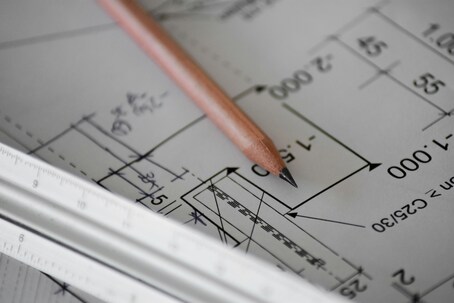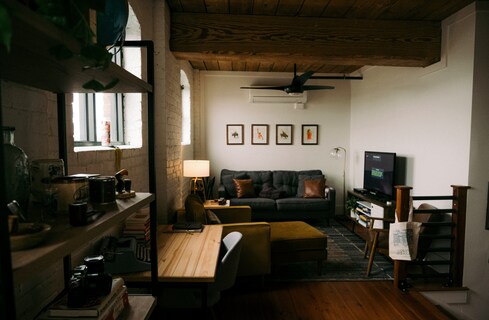How to Create Efficient Space When Designing Floor Plans
When it comes to building or remodeling a home in Maryland, DC, or beyond, designing an efficient floor plan is one of the most critical steps in the process. An efficient layout isn’t just about maximizing square footage; it’s about creating a space that flows, serves your needs, and improves daily life.
Whether you’re a homebuyer looking for your dream house or a homeowner ready to renovate, these tips will help you design a functional, well-thought-out floor plan that aligns with your lifestyle.

Why Does Floor Plan Efficiency Matter?
A home’s layout can drastically impact how you live and move within it. An inefficient design may leave you frustrated with wasted space, cramped rooms, or awkward traffic flow. A well-planned layout, on the other hand, optimizes every square foot and ensures you’ll enjoy your home for years to come.
Efficient spaces:
- Enhance natural light and airflow
- Improve functionality
- Save money on construction and utilities
- Boost property value
By prioritizing efficiency, you can create a space that feels larger, performs better, and works seamlessly for your needs.
Steps to Plan an Efficient Layout
1. Understand Your Needs and Lifestyle
Start by evaluating how you’ll use the space. Are you a young professional who works remotely, a growing family, or an empty nester? Your lifestyle will determine the functionality you require from each room.
Questions to ask yourself include:
- How many bedrooms and bathrooms do I need?
- Do I need dedicated spaces, like a home office or gym?
- Is an open-concept layout important for entertaining, or do I prefer separate, private areas?
This clarity will help guide the placement, size, and purpose of each area.
2. Maximize Natural Light
Natural light can make a home feel brighter, warmer, and more welcoming while reducing energy use for artificial lighting. Position main living areas like the kitchen, dining, and living room to take advantage of sunlight during the day. Large windows, skylights, and glass doors are excellent strategies to bring light into darker areas of the home.
3. Optimize Traffic Flow
Efficient layouts prioritize smooth movement between spaces. Key tips include:
- Centralize commonly accessed areas like kitchens and bathrooms.
- Avoid long hallways that eat up square footage.
- Minimize unnecessary walls and barriers without sacrificing functionality.
For example, placing the kitchen near the dining area reduces time spent carrying food back and forth. Similarly, locating bedrooms away from noisy areas (like living rooms or the front door) ensures privacy and quiet.

4. Create Multi-Functional Spaces
If space is limited, look for opportunities to make rooms do double duty. Think about incorporating features like:
- A guest bedroom that also functions as a home office
- Built-in storage to reduce the need for bulky closets
- A kitchen island with seating that doubles as a dining area
Flexibility in room function allows your home to adapt as your needs evolve over time.
5. Choose Open vs. Closed Layouts Thoughtfully
Open floor plans are popular for their spacious feel and ability to bring people together, but they’re not always ideal for everyone. Consider these factors:
- Open layouts: Work well for social households, creating seamless transitions between the kitchen, dining, and living areas.
- Closed layouts: Better for households seeking privacy, less noise, or more defined spaces.
Find the right balance by keeping some areas open (like a kitchen/dining combo) while maintaining privacy in others, like bedrooms or offices.
6. Incorporate Ample Storage
No matter the size of your home, storage solutions are essential for keeping clutter at bay. Key ideas include:
- Built-in bookshelves, cabinets, and closets
- Under-stair storage or attic access
- Pantry spaces for kitchens and laundry areas
Efficient storage minimizes wasted space and keeps your home organized.
7. Keep Future Needs in Mind
Designing for today is important, but don’t forget to consider how your needs may change in the future. For example:
- Planning to start a family? Include an extra bedroom or nursery.
- Expecting to age in place? Incorporate single-level living or wider doorways for accessibility.
Think long-term to ensure the layout continues to work for you.

Common Mistakes to Avoid
While designing efficient spaces, watch out for these pitfalls:
- Over-customization: While unique designs showcase personality, they may reduce your home’s resale value. Keep layouts flexible and appealing to potential buyers.
- Neglecting furniture placement: Ensure rooms are large enough to comfortably fit furniture without feeling cramped.
- Forgetting outdoor spaces: Balance your indoor efficiency by considering how rooms connect to patios, decks, or gardens.
Benefits of Efficient Floor Plans for Maryland and DC Homes
Maryland and DC homes offer unique challenges, such as limited urban spaces or historical architecture. Building an efficient layout helps overcome these limitations by:
- Making the most of smaller plots in urban neighborhoods
- Preserving traditional charm while meeting modern needs
- Enhancing resale potential in competitive markets
Whether your home overlooks Chesapeake Bay or is nestled in DC’s cosmopolitan streets, smart design ensures you can fully enjoy it.
Partner with the Experts
Designing efficient floor plans can feel overwhelming, but you don’t have to go it alone. Working with professionals ensures every detail is covered, from optimizing natural light to tailoring the layout to your life.
At Winthorpe Design and Build, we’ve helped countless Maryland and DC homeowners create their dream spaces with intelligent, efficient designs. Our team of architects and builders will guide you through each step, ensuring your floor plan combines functionality, beauty, and long-term value.
Contact us today to learn more about our process and how we can help you design a home you’ll love for years to come!





